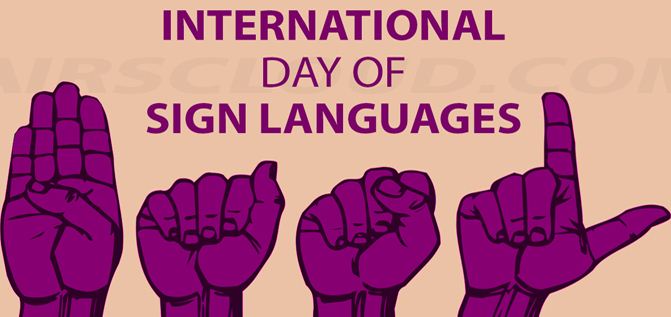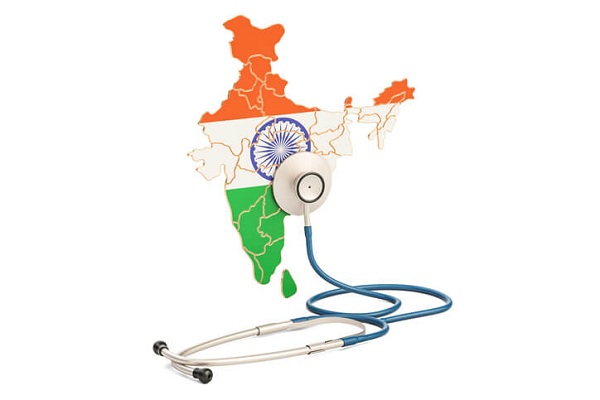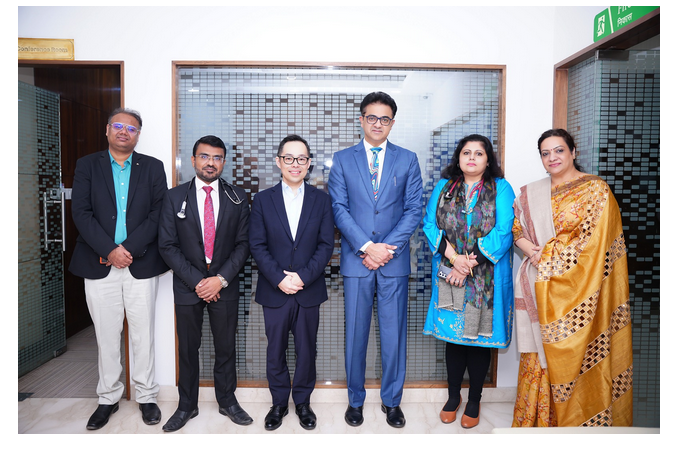Every year on September 23rd, the world comes together to celebrate the International Day of Sign Language. It's a day to recognize the beauty and importance of sign language, a unique form of communication that bridges the gap for millions of people around the globe who are deaf or hard of hearing.
What Is Sign Language: Sign language is a visual and gestural language that conveys meaning through handshapes, facial expressions, and body movements. It's a complete and complex language in its own right, with its own grammar and syntax. Sign language allows individuals who are deaf or hard of hearing to communicate effectively, express their thoughts, and engage with others.
Why Do We Celebrate It: The International Day of Sign Language is celebrated to raise awareness about the importance of sign language in the lives of deaf and hard-of-hearing individuals. It highlights the need for equal access to communication and information for all, as recognized in the United Nations Convention on the Rights of Persons with Disabilities.
Deafness in India: In India, there is a significant population of individuals who are deaf or hard of hearing. According to WHO, there are over 63 million people with hearing disabilities. However, this number is believed to be much higher due to underreporting and limited access to healthcare and education.
India's Efforts to Tackle Deafness: India has made efforts to address the needs of its deaf and hard-of-hearing population. Some important initiatives include:
1. Sign Language Recognition: In 2009, the Indian Sign Language Research and Training Centre (ISLRTC) was established to promote and develop Indian Sign Language (ISL). Efforts have been made to standardize ISL and provide training to teachers, interpreters, and the deaf community.
2. Education: India's Right to Education Act (RTE) recognizes the need for inclusive education. Special schools and integrated classrooms for children with hearing disabilities have been established to ensure they receive quality education.
3. Job Opportunities: Various organizations and initiatives aim to empower deaf individuals by providing vocational training and job opportunities. This helps them become financially independent and contribute to society.
The Importance of Sign Language
Sign language is not just a mode of communication; it's a lifeline for many. It allows deaf individuals to access education, healthcare, employment, and social interactions. Celebrating the International Day of Sign Language reminds us that communication is a fundamental human right.
By recognizing and promoting sign language, we create a more inclusive society where everyone, regardless of their hearing ability, can participate fully in all aspects of life.
So, on this International Day of Sign Language, let's appreciate the beauty of sign language and work towards a world where no one is left behind when it comes to communication and understanding.
The Impact on Education
One of the most significant areas where sign language plays a pivotal role is education. In many countries, deaf children attend specialized schools where sign language is the primary medium of instruction. This approach, known as bilingual-bicultural education, recognizes the importance of teaching deaf children in their native sign language while also providing exposure to the majority spoken language.
In India, the Right to Education Act (RTE) acknowledges the need for inclusive education, including provisions for children with hearing disabilities. Special schools and integrated classrooms have been established to ensure that deaf children receive quality education. Sign language is at the heart of this educational framework, enabling deaf students to access knowledge effectively.
Challenges and Progress
Challenges persist while significant progress has been made in recognizing and promoting sign language. Many deaf individuals still face barriers to accessing education, healthcare, and employment. The Indian healthcare system is taking steps to improve communication with the deaf community, but more needs to be done.
One of the challenges is the lack of trained interpreters and sign language instructors. Training programs and initiatives are essential to bridge this gap and ensure that deaf individuals can fully participate in society.

 Many deaf individuals still face barriers to accessing education, healthcare, and employment. The Indian healthcare system should take steps to improve communication with the deaf community, more needs to be done.
Many deaf individuals still face barriers to accessing education, healthcare, and employment. The Indian healthcare system should take steps to improve communication with the deaf community, more needs to be done.










.jpeg)







.jpeg)

.jpg)










